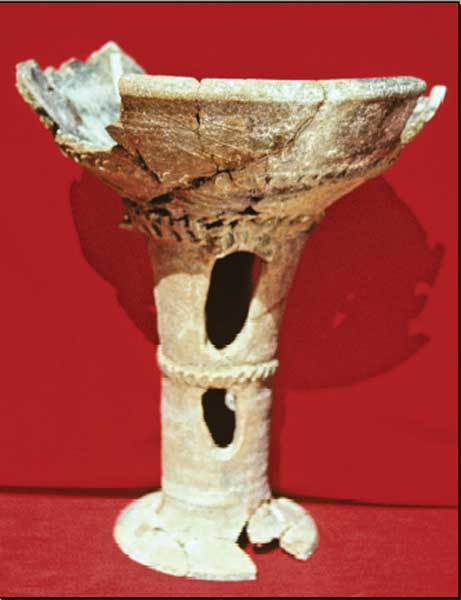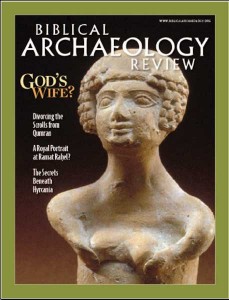Strata: Incense Burner Pieced Back Together

In 2002 excavators at Tell Qarqur in northwestern Syria came across some sherds that fit together as an incense burner, but several pieces were still missing. In subsequent years, digggers continued the search in the hope of finding more pieces. By 2005 they had enough of them to make a nearly complete incense burner, and they proceeded to reconstruct it. The result was the pictured vessel for that mysterious aromatic used in religious rituals for at least 6,000 years, up to our own day. This incense burner dates to about 2000 B.C.
Rudolph Dornemann, former executive director of the American Schools of Oriental Research, who heads the dig, hopes to find the few remaining pieces of the incense burner in future seasons.

The building in which the incense burner was discovered has been tentatively identified as a temple. Tending to confirm this identification is a cult standthat was found near the incense burner. Cult stands, like incense burners, have been found from numerous periods all over the Levant. But the somewhat vague name—cult stand—indicates that archaeologists are not quite sure how they were used. Perhaps a bowl was put on top in which offerings were placed. What the priest or offerant said or did, however, remains a mystery.
Already a library member? Log in here.
Institution user? Log in with your IP address.

